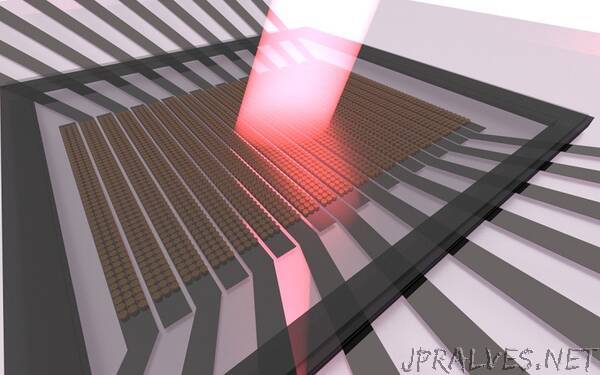
“By integrating nanoantennas with liquid crystals, A*STAR researchers have created a metasurface that allows fine dynamic control over the properties of light.
From holograms to augmented reality devices and optical sensors, a common enabling principle behind these innovations is the ability to precisely manipulate light. Over the years, researchers have created materials that allow them to control how light behaves. A familiar example would be liquid crystals, used in television and mobile phone displays.
However, the resolution of liquid crystal-based spatial light modulators leaves much to be desired—each pixel ranges from three to tens of micrometers. Next-generation light detection and ranging (LIDAR) and display technologies require higher resolution and wider steering angles than currently afforded by liquid crystals.
Researchers led by Arseniy Kuznetsov at A*STAR’s Institute of Materials Research and Engineering (IMRE) have now overcome these restrictions using metasurfaces—materials comprising nanostructures that are smaller than the wavelengths of light. “When an incident light beam is passing through or reflected from a metasurface, its phase and amplitude transform in a desired fashion to achieve different functionalities, as determined by the nanostructures,” Kuznetsov explained.
In this study, his team fabricated nano-scale antennas (nanoantennas) made of the semiconductor titanium dioxide and integrated them with liquid crystals to form a hybrid metasurface. They then applied a voltage to the liquid crystals, which in turn alters the resonance range of the nanoantennas to allow fine-tuning of the properties of the resultant light beam.
“Importantly, only a very thin layer of the liquid crystal—less than one micron—around the nanoantenna is required to perform this tuning. This is very different from conventional liquid crystal-only spatial light modulators (SLMs) where the liquid crystal layer is much thicker, typically five microns,” said Kuznetsov.
By miniaturizing the system components into the nanometer range, the researchers also demonstrated, for the first time, light modulation by a metasurface at the level of individual pixels. The efficiency of light modulation in their 28 pixel-device exceeded 30 percent, superior to prior demonstrations which performed in the efficiency range of just 1-2 percent.
“We were also able to achieve a beam-steering angle of 22 degrees using our pixels of approximately one-micron width, compared to only 0.8 degrees allowed by currently existing transmissive SLMs,” Kuznetsov added. This improvement in the steering angle can already be applied to technologies such as LIDAR in autonomous vehicles, the researchers said.
Going forward, Kuznetsov’s team plans to use the high beam-steering angle of their metasurface in two-dimensional pixels for producing holographic images.
The A*STAR-affiliated researchers contributing to this research are from the Institute of Materials Research and Engineering (IMRE).”
